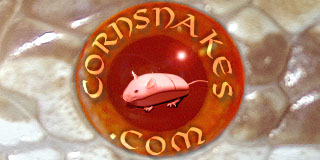larryg
New member
I'll start a new thread about this, since I have new information...
First, Len Krysko sold a lot of his collection, including his Miami Corns. The Miami Corns were sold to someone outside of the USA, and I should have gotten another hatchling from him last summer, if I was going to (ever.)
As to where his former breeding colony was collected, he said "the adults that I had were collected in various areas of Miami including the Redlands to the Nuclear Power Plant areas." One should note that Dade County has been called Miami-Dade County for almost 10 years now, and the vast majority of the people say "Miami" when referring to the general metropolitan area, even if outside the City of Miami city limits. My own WC specimen is from near the eastern edge of Biscayne National Park, perhaps further east than most Len's, from the information he gave.
As far as the question of terminology, Dr. Kenney Krisko said Miami Phase should only be used to refer to the color pattern, and that it is not exclusive to the Miami locale. He also suggested that Okeetee Phase is nothing more than a color phase. Simply calling them Miami Corns or Okeetee Corns might be more appropriate, if trying to suggest locale. For example, there is usually little confusion when someone says Colombia Boa.
He said that even though nothing has been published about Miami (Miami-Dade or whatever) locality Corns possibly representing some sort of locality variation because of differences in size, feeding habits, and possibly number of eggs per clutch... "it warrants further study." When it's a little warmer here (it's actually cold in Florida this week), I may visit him with 2 or 3 snakes and find out what he means and how such a study would be accomplished.
They are undoubtedly smaller. I went to see some proven breeders for sale (locality lines) and the females only weighed about 250 grams maximum, and they are 4 or 5 years old at least. He also had a 'non locality Miami Phase' that was nice-looking, but obviously much larger and thicker than the locality Miamis. His locality Miamis are from Homestead, which is in southern Miami-Dade County. They looked similar to mine, mostly. He pointed out that the Miami saddles often looked sort of 'stretched through' or pulled apart, where you can see the background showing through a bit. I've noticed the same thing. They also tend to have at least a moderate amount of black checkering on the underside (a lot more than the average Okeetee, for instance.) The non-locality Miami Phase had a belly like an Okeetee, with a relatively small amount of black checkering.
First, Len Krysko sold a lot of his collection, including his Miami Corns. The Miami Corns were sold to someone outside of the USA, and I should have gotten another hatchling from him last summer, if I was going to (ever.)
As to where his former breeding colony was collected, he said "the adults that I had were collected in various areas of Miami including the Redlands to the Nuclear Power Plant areas." One should note that Dade County has been called Miami-Dade County for almost 10 years now, and the vast majority of the people say "Miami" when referring to the general metropolitan area, even if outside the City of Miami city limits. My own WC specimen is from near the eastern edge of Biscayne National Park, perhaps further east than most Len's, from the information he gave.
As far as the question of terminology, Dr. Kenney Krisko said Miami Phase should only be used to refer to the color pattern, and that it is not exclusive to the Miami locale. He also suggested that Okeetee Phase is nothing more than a color phase. Simply calling them Miami Corns or Okeetee Corns might be more appropriate, if trying to suggest locale. For example, there is usually little confusion when someone says Colombia Boa.
He said that even though nothing has been published about Miami (Miami-Dade or whatever) locality Corns possibly representing some sort of locality variation because of differences in size, feeding habits, and possibly number of eggs per clutch... "it warrants further study." When it's a little warmer here (it's actually cold in Florida this week), I may visit him with 2 or 3 snakes and find out what he means and how such a study would be accomplished.
They are undoubtedly smaller. I went to see some proven breeders for sale (locality lines) and the females only weighed about 250 grams maximum, and they are 4 or 5 years old at least. He also had a 'non locality Miami Phase' that was nice-looking, but obviously much larger and thicker than the locality Miamis. His locality Miamis are from Homestead, which is in southern Miami-Dade County. They looked similar to mine, mostly. He pointed out that the Miami saddles often looked sort of 'stretched through' or pulled apart, where you can see the background showing through a bit. I've noticed the same thing. They also tend to have at least a moderate amount of black checkering on the underside (a lot more than the average Okeetee, for instance.) The non-locality Miami Phase had a belly like an Okeetee, with a relatively small amount of black checkering.
